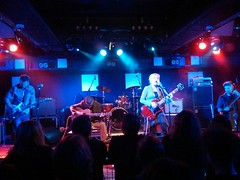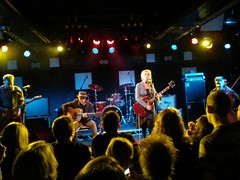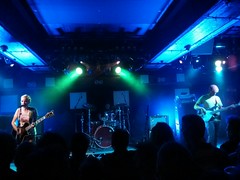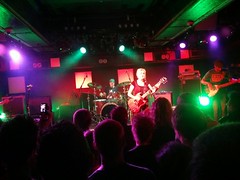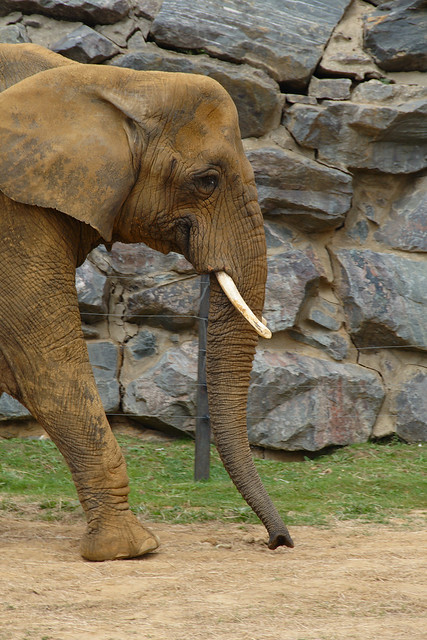Over the last century or so several caches of documents from early Chinese history have been found (often during the building of roads or modern buildings). These have provided scholars with a lot more information to reinterpret the tradition historical sources for early Chinese history. In this episode of In Our Time Roel Sterckx (University of Cambridge), Tim Barrett (SOAS, University of London) and Hilde de Weerdt (Leiden University) talked about what the traditional sources are, what they contain and a bit about what the new sources add to the picture.
The earliest written records in China are from the Shang dynasty, around 1200BC. These are the oracle bones (and I believe this is thought to be what writing was invented for in China although they didn’t talk about that on the programme). Each of the bones is a record of a divination – the king would ask a question which was written on the bone. The bone was then cracked with a hot poker and the pattern of the cracks interpreted by the priest in order to answer the question. The answer was written on the bone, and subsequently the actual outcome was also recorded on the bone. An example they gave on the programme was: the King wishes to know if he will fall ill this year; the answer is that if he doesn’t go to battle, then he will not fall ill; and it was so. These were not written with the intention of providing historical data, but a certain amount of information about the courts and politics of the time can be gleaned from these. When the Shang dynasty were replaced by the Zhou dynasty these oracles were no longer performed in the same way. But later scholars can get similar information about the courts of the time from the inscribed bronze vessels that became common during this dynasty. These inscriptions tend to commemorate significant events – like someone’s appointment to an important office, or a victory and so on.
The first written texts (that survive) that are intended to be history also date back to the Shang or Zhou dynasties. This the “Book of Documents”, and the exact date of it is complicated – firstly because it only survives in later editions so the date of the first physical copies of it are always going to be conjecture. But also because it is a collection of disparate documents, some of which certainly post-date the Shang (they are about the Zhou dynasty) and some of which may well have been written earlier. These documents are records of speeches which may or may not be mythological in many cases – but they still tell later historians about the concerns and so on of the people of this era. Some are similar to the inscriptions on the Zhou bronze vessels – a speech from the king appointing someone to a position etc. Others are from Kings to their advisers (or vice versa) concerning good government, and the reasons for particular decisions.
The next major source is a book called “Springs and Autumns” which is a very dry and terse record of the major events each year for a period covering a couple of centuries in the mid-first millenium BC. It is traditionally believed to’ve been written by Confucius however there is no evidence to actually support this. These annals provide a lot of factual data (this person was born, this one died, this battle was fought), but little nuance and no interpretation. This gave rise to other texts written a few centuries later during the 2nd Century BC which are commentaries on the “Springs and Autumns” and explain the significance of events.
After this the programme moved on to discuss the historian who occupies the same sort of place in Chinese history writing as Herodotus does in the Western historical tradition – a sort of Father of History. This was Sima Qian who was one of the two authors of a history of China, writing in the early Han dynasty (in the 2nd Century BC). The book (the Records of the Grand Historian) was begun by his father, but often Sima Qian is listed as the only author. This book set the pattern for all subsequent official dynastic histories in China – even to the modern day, as the Qing dynasty history in this format is still being compiled. The book is divided into sections which each contain a different sort of look at the history, so events are often seen in different ways in the different sections. One of these is an annal of a similar type to “Springs and Autumns” – dry and factual, recording the events of each year in order. Another is a set of tables of things like chronologies of the kings & emperors. A large part of the text is taken up with biographies of significant figures – kings, courtiers, generals, but also jesters and other less high ranked persons. Sima Qian was putting forth the idea that history is made by people, and so to understand what happened you need to understand the people who were involved. Another section of the book is taken up with treatises on subjects like the economy, or music, or the rivers.
As I said, this was the pattern of official histories from then on. There were families of historians who took on the task of keeping Sima Qian’s history up to date during the Han dynasty. In later dynasties detailed records were kept during each ruler’s reign, and each official’s tenure and then biographies were compiled after their deaths from these records to go with the annals. These were then all gathered together and later compiled into a history of the dynasty, along with treatises and so on (presumably after the next dynasty took power – I’m not entirely clear on that tho). They talked a bit on the programme about what the general purpose was of these historical records. Bragg asked if it was partly about setting out what sort of people the Chinese were – a sort of statement of cultural values. But the experts were clear that this wasn’t really the point, and particularly not at first (in the Han dynasty and immediately after). In part because this was seen to have been done the Book of Documents, but also because as the only literate culture in the vicinity there wasn’t an audience they needed to convince. Instead the histories were often used to find precedents – things like when nomads started raiding the administration of the day could look back to see how this had been dealt with previously and how well it had worked out then. And they were often written with an eye to justifying decisions taken based on precedent or outcome.
Obviously these sources are pretty centrally oriented – they are written by and for the seat of power. Women, and lower class people in general, are not often mentioned. And that is one of the things that makes the new discoveries of documents so exciting. They are often concerned with more everyday life, or the outskirts of the empire. They are the general written communication and recrods of the era they are from, rather than the curated selection that a historian (or a group of historians) thought were important enough to record for posterity. Some are caches of the documents that the historians used to compile the official histories and then discarded. These documents are not just a valuable historical resource in their own right, but they are also a good way to look at the official histories and see what the biases were.
I thought this was a particularly interesting programme – it’s a shame tho that the section about the new discoveries felt a bit rushed.
